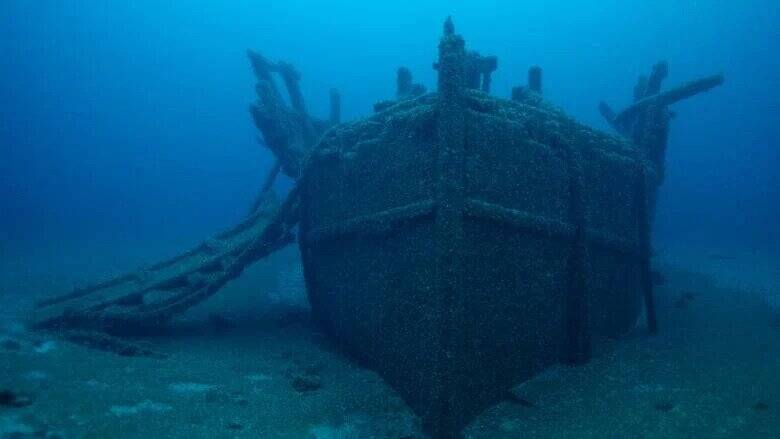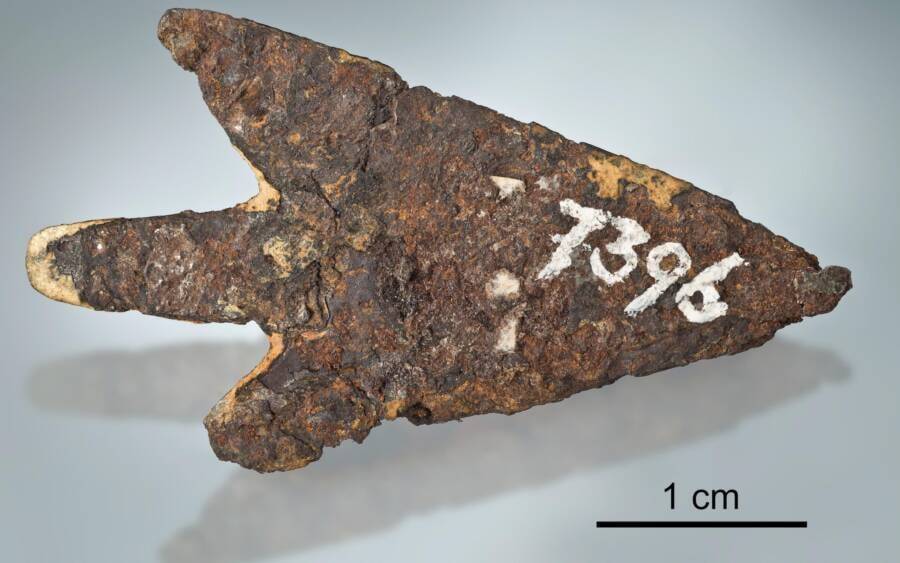This year, archaeologists made a wealth of stunning finds that spanned world history, from ancient Egypt's mummified crocodiles to medieval Spain's penis-shaped weapon sharpener.
The past is a living thing. And more often than not, it lives under our feet. Over the past year, we’ve covered a number of incredible archaeological discoveries that have informed, challenged, and complicated our view of ancient people and societies.
Take this year’s research into Japan’s ancient Hirota people. For decades, archaeologists have wondered why human remains found on the island of Tanegashima, where the Hirota lived, had deformed skulls. No one knew the answer until researchers from Kyushu University and the University of Montana determined that they’d likely practiced artificial cranial deformation.
That said, scientists aren’t sure what purpose this served — just as they’re not entirely sure why a child was buried with 142 dogs in ancient Egypt between the first century B.C.E. and the first century C.E. They’ve speculated that the burial was perhaps ritualistic or the result of a catastrophe.
Archaeology offers answers, but it often brings up questions, too. These are some of the most incredible archaeological news stories from 2023, from the discovery of a 19th-century shipwreck in Michigan’s Lake Huron to the excavation of a sprawling Roman mosaic beneath the site of a future Aldi in England.
A Shipwreck Found 280 Feet Deep In Lake Huron
Sometimes, archaeological discoveries don’t take place beneath the Earth but rather under the water. And one of the most astounding discoveries this year took place in Michigan’s Lake Huron, where filmmakers working on a documentary about invasive mussel species stumbled upon the sunken wreck of the Africa, a ship that had been lost for 128 years.

Inspired Planet Productions
The shipwreck of the Africa.
Technically, the filmmakers, Yvonne Drebert and Zach Melnick, stumbled upon mussels first. Notified of an anomaly at the bottom of the lake, they sent their remotely operated vehicle with an ultra-low-light, high-resolution camera system into the depths to investigate. Two hundred and eighty feet beneath the surface, they detected the quagga mussels they were looking for – clinging to an enormous shipwreck.
It was the wreck of the Africa, a passenger-turned-cargo ship that sank in 1895. Then, the ship and its 11 crew members disappeared during a snowstorm, never to be seen again.
Thanks to the mussels, the mystery of the Africa‘s fate has finally been solved.
A ‘Very Rare’ Arrowhead That Was Carved From A Meteorite
Around 1873, archaeologists unearthed a small arrowhead near Lake Biel in Switzerland. As Beda Hofmann, the director and curator of meteorites at the Natural History Museum of Bern, told Live Science, it seemed to be “a typical arrowhead coated in rust.” Now, 150 years later, scientists have discovered that the ancient artifact is anything but typical.

zvg/Thomas SchüpbachThis arrowhead was carved from a meteorite that crashed into the Earth more than 2,000 years ago.
The 1.5-inch-long arrowhead, which dates to between 900 B.C.E. and 800 B.C.E., was actually carved from a meteorite. What’s more, experts believe they can point to the exact space rock from which it originated.
Around 1500 B.C.E., a meteorite smashed into the Earth near Estonia, leaving behind a hole known as the Kaali crater. Archaeologists have theorized that people living in the area collected chunks of the iron-rich rock that eventually made their way to Switzerland over trade routes. One of these chunks was then eventually formed into the arrowhead that was rediscovered 2,000 years later.
And if that weren’t fascinating enough, this arrowhead is one of just 55 artifacts made from a meteorite ever discovered.
A Roman Mosaic Discovered At The Site Of A Future Aldi Store
History lives under our feet. And the next archaeological discovery proves it. While archaeologists were inspecting the site of a future Aldi supermarket in Olney, England, they came across a stunning Roman mosaic that dates back to the Roman occupation of Britain between 43 and 410 C.E.

X/Oxford ArchaeologyThe stunning mosaic is a vestige of life in Roman-occupied Britain.
“Due to the site location, we anticipated some notable Roman remains,” John Boothroyd, a senior project manager at Oxford Archaeology, told the BBC, “but the discovery of this fantastic mosaic far exceeded those expectations.”
Experts believe that the mosaic, which is remarkably well preserved and contains red, white, and blue tiles as well as decorative flourishes, likely once belonged to a Roman villa and bathhouse. Because there was a Roman settlement nearby between the second and fourth centuries C.E., archaeologists suspect that the mosaic dates back to this time.





